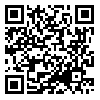BibTeX | RIS | EndNote | Medlars | ProCite | Reference Manager | RefWorks
Send citation to:
URL: http://refahj.uswr.ac.ir/article-1-2130-en.html
Objectives: In each year, Iranian government provides for food subsidy in its budget. Recently, the effect of food subsidy to the households has been controversial. It is clear that the goal of paying food subsidy is providing the needs of calories for each person and the community food security as a whole. Studies show that about 10-20 percent of Iranian households, intake less calorie than they need. Then it can be a good reason for Iranian government to continue the food subsidy payment. Method: In this Article we use vector autoregressive method for investigating relationship between per capita calorie intake, food subsidy, income and food prices in Iran, using annual data for 1961-2004. Calorie intake is average per capita energy (calorie) intake per day, calculated on the basis of per capita dietary energy derived from national food balance sheets (source FAO:2006). Real per capita GDP is adjusted with CPI in 1990 and the real food price index is the corresponding nominal index deflated by the CPI in 1990 (Source: Central Bank of the Islamic Republic of Iran year book). The real food price index (1990 prices) is the corresponding nominal indexed by the CPI (source: Central Bank of the Islamic Republic of Iran year book). Food subsidy (1990 prices) is deflated by CPI (source: Consumers and Producers Protection Organization). Findings: On the basis of Augmented Dicky Fuller unit root test we find that all variables have only one unit root. In respect to LR, AIC and FPE criteria, the best lag length for initial VAR model is 3 lag. For determining the number of long-run relationships between the variables, we used trace statistics. On the basis of this statistics we only find one long-run relationship (cointegration) between variables. The long run relationship was only significant between calorie intake, income and food subsidy variables. The weakly exogenous test shows that food subsidy does not respond to the discrepancy from long-run equilibrium and income and calorie intake do all of the adjustment. We use the final model for investigating the effect of food subsidy reduction on Iranian households' calorie intake. The final model shows that long run income elasticity of calorie demand is 0/16. Also results show that long run food subsidy elasticity of calorie demand is inelastic at 0/009. Since feedback exists between calorie intake, income and food subsidy variables, this ceteris paribus interpretation is potentially misleading because it ignores relations between the three variables in the VAR model. Then, impulse responses may give a better picture of the relations between the variables. Since all the variables are I (1), the effects of the shocks are permanent. The results show that one unit reduction in food subsidy without income compensation has a considerable negative effect on calorie intake in short-run and that it takes around five years for households to adjust themselves to the new condition. But, if one standard error food subsidy reduction occurs with the same amount of income compensation, then the effect of income compensation not only removes the negative effects of subsidy reduction, but also will have positive effect on calorie intake in short-run and long-run. Results: it seems that focus on food subsidy reduction without considering income growth will deteriorate Iranian household calorie intake.
Received: 2015/09/11 | Accepted: 2015/09/11 | Published: 2015/09/11
| Rights and permissions | |
 |
This work is licensed under a Creative Commons Attribution-NonCommercial 4.0 International License. |





